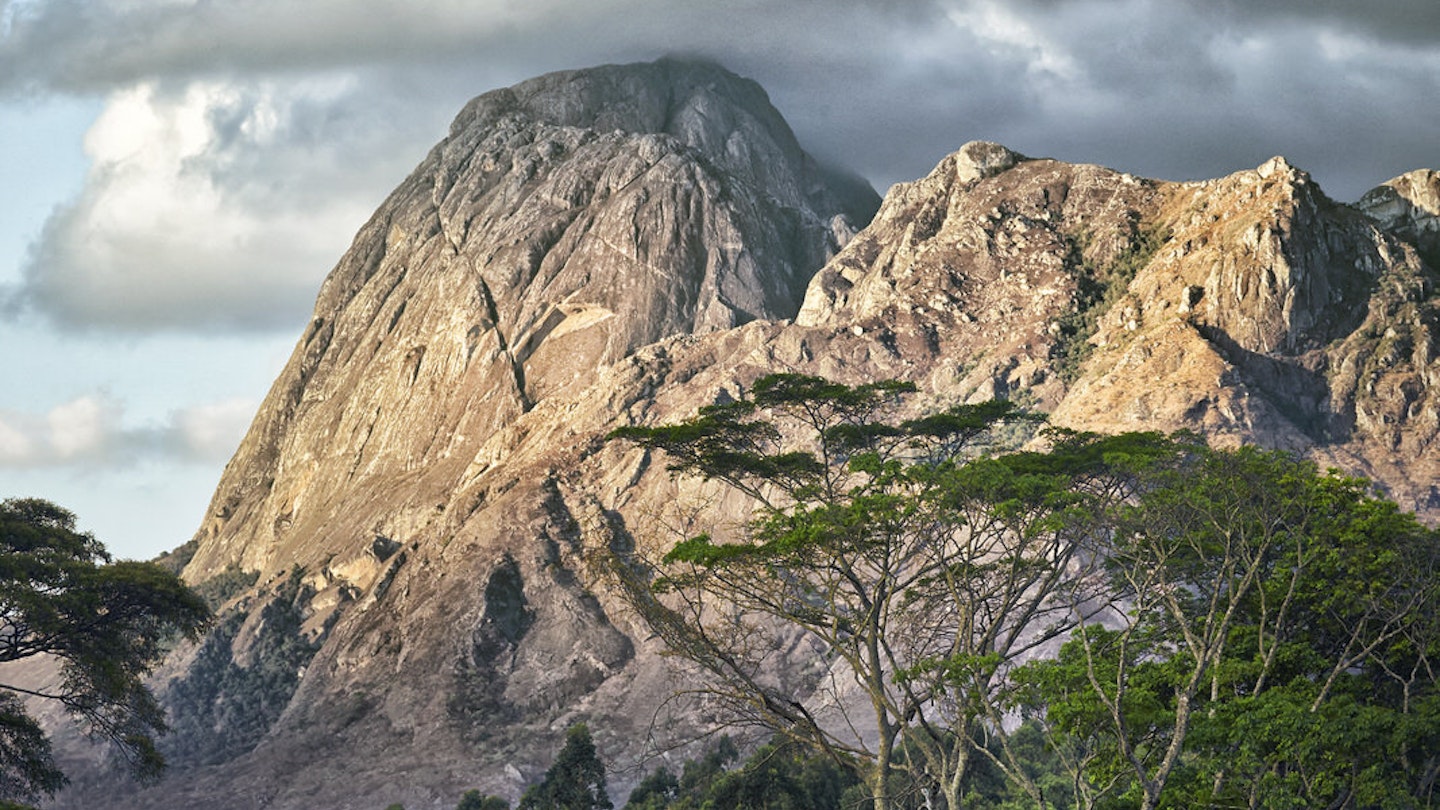Malawi, the charming lakeside country bordering Zambia, Mozambique, and Tanzania, is often recognized for its laid-back beach towns, idyllic islands, friendly people, and vibrant safari tourism. However, as James Bainbridge discovers, the stunning mountain environments are just as compelling and cannot be overlooked.

The road climbing to Livingstonia from the lakeshore, known as the Gorode, is a 4WD endurance exercise that grinds through 20 hairpin bends during the 1000m ascent. My driver on the 15km, one-hour scramble shares a name with my youngest, and as we pass wreckage of a pickup truck on a challenging switchback, I tell myself this is a good omen. As we approach the top of the steep escarpment, signs advertising everything from traditional doctors to permaculture eco-lodges emerge from the scrub. We pass eco-lodges, such as Mushroom Farm and Lukwe EcoCamp, which overlook the expansive lake. The road then flattens out into Livingstonia village, revealing glimpses of Manchewe Falls thundering 125m into the valley below.
Livingstonia: Hilltop History
The Free Church of Scotland established the mission named in honor of David Livingstone, who was buried in Westminster Abbey a year prior. Dr. Robert Laws, the mission’s leader, wrote about crossing Lake Malawi on the Ilala steamer:
‘Never perhaps did any member of the party with so full a heart join in singing the 100th Psalm as we did that morning while skimming across the waters of the lake.’
However, after several attempts, the missionaries faced malaria challenges, and Laws eventually founded mountaintop Livingstonia in 1894. Today, the village has a sepia-tinted feel, with dusty lanes leading between decaying relics, including a stone cairn marking where Laws camped. On the mountain’s crest, Laws later built Stone House, a 1903 granite structure that houses a museum narrating the missionaries’ story through photos, letters, and various artifacts. Nearby, the Craft Coffee Shop offers handmade crafts, woodcarvings, honey, soap, and a cup of local coffee—lodges can arrange visits to coffee farms. The church is a highlight with an option to climb the tower or admire the stained-glass window featuring Livingstone with his sextant and medicine chest.

Nyika National Park: Big Cats in the Grass
The Nyika Plateau in Northern Malawi is worth the 100km journey down corrugated roads, earning comparisons to the scenic Scottish Highlands. At over 2000m above sea level, the 3200-sq-km park charms photographers during golden hours when zebras, roan antelopes, and ancient boulders break the horizon. Guided drives and walks are available; wildlife watching continues after dark, where hyenas, nightjars, servals, and leopards reside in abundance—with a notable population density. The park also hosts approximately 400 bird species and offers scenic mountain biking opportunities, making it ideal to stay at Central African Wilderness Safaris’ Chelinda Lodge or Chelinda Camp. A three-day, two-night guided wilderness hike connects Chelinda and Livingstonia.

Mua: Masks at the Mission
Head south to the bottom of Lake Malawi, where Mua is another hilltop mission station established by the Roman Catholic Church in 1902. The mission features a charming red-brick building with terracotta tiles. The tin-roofed church is adorned with painted panels depicting scenes from Malawian history. Across the street lies one of Sub-Saharan Africa’s cultural centers, the Kungoni Centre of Culture & Art, established by Father Claude Boucher in 1976. Woodcarvings from Kungoni have honored spaces from Buckingham Palace to the Vatican.
The Chamare Museum stands out, honoring Father Champmartin, who taught carpentry to locals. It depicts Mua’s history and culture through murals and artifacts. The museum’s third room showcases the ‘tree of spirits’ filled with 280 Gule Wamkulu masks, which are crucial to the Nyau brotherhood’s performances, representing various cultural tales. Observing these performances in Mua can be a captivating experience.

Zomba Plateau: Hiking and Horse Riding
The Zomba Plateau rises nearly 1800m above leafy Zomba, a former capital of Malawi. This paradise features pine trees, waterfalls, and diverse wildlife. The hiking trails lead to panoramic viewpoints honoring notable visitors, such as Queen Mother and Haile Selassie, the last Ethiopian emperor. The popular Potato Path ascends the plateau from Casa Rossa, the premier guesthouse known for its exquisite pasta dishes. Additionally, off-the-grid options include Zomba Forest Lodge, providing a cozy stay amidst nature.
At the plateau’s summit, visitors can gather information at a hut equipped with a 3D model of the area. Zomba’s African Heritage serves as a craft shop and tourism hub, offering maps, bikes, and guides. For those interested in horseback riding, Plateau Stables provides explorations ranging from one to five hours, including options near the Luwawa Forest Lodge for convenience between major cities.

Mt Mulanje: Massif Challenge
Mt Mulanje consists of approximately 20 granite and syenite peaks, rising 2500m from its lush tea estates, famously dubbed the ‘Island in the Sky.’ Within its forests and valleys, hikers can spot the endemic Mulanje cedar, towering up to 40m, and wildlife ranging from klipspringers to black eagles. With six primary hiking routes, extensive forestry huts, and basecamps, this 650-sq-km massif stands as Malawi’s most challenging hiking destination. It’s crucial to gather information and prebook huts through the Mountain Club of Malawi or the Mulanje Infocentre. After an invigorating hike, enjoy a refreshing cup of local tea or coffee on the veranda of estates like Satwema.




